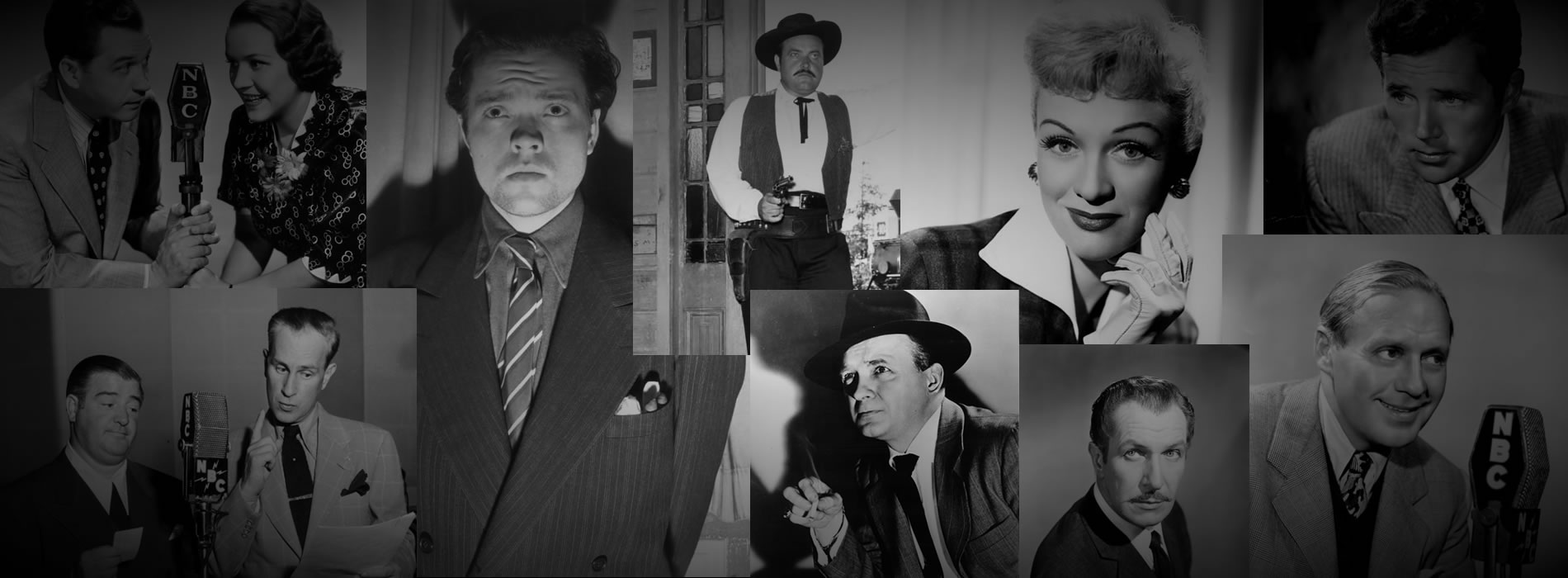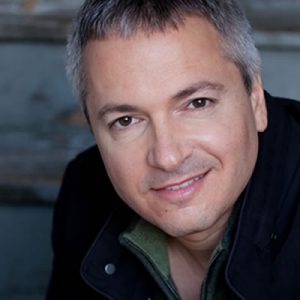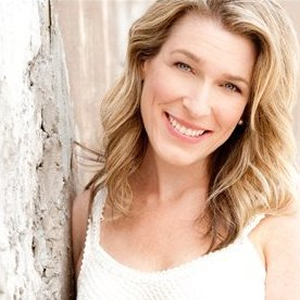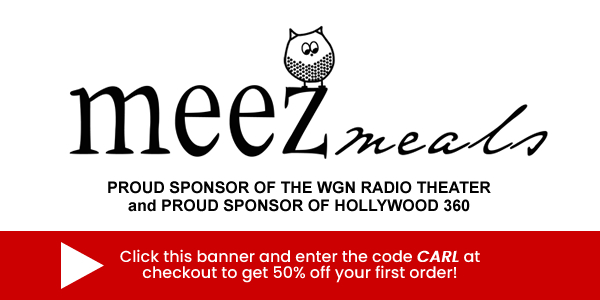
NEWSLETTER | VOL. 18, October 2022
Welcome to this month’s edition of The Hollywood 360 Newsletter, your place to get all the news on upcoming shows, schedule and interesting facts from your H360 team!
Carl’s Corner
by Carl Amari
Hello everyone and Happy Fall! Here’s the Hollywood 360 newsletter, October 2022 / Vol. 18. As someone on our mailing list, you’ll receive the most current newsletter via email on the first day of every month. If you don’t receive it by the end of the first day of the month, check your spam folder as they often end up there. If it is not in your regular email box or in your spam folder, contact me at carlpamari@gmail.com and I’ll forward you a copy. The monthly Hollywood 360 newsletter contains articles from my team and the full month’s detailed schedule of classic radio shows that we will be airing on Hollywood 360. Each month I’ll provide an article on one of the classic radio shows we’ll present on Hollywood 360. This month, we’ll be airing many Halloween-type shows, including an episode of Inner Sanctum Mystery the week of October 15th, so here’s an article on this great horror series and its creator, Himan Brown (seen here directing an episode of Inner Sanctum from the booth). Enjoy!
INNER SANCTUM & HIMAN BROWN
By Carl Amari and Martin Grams
By the early 1960s, most listeners had turned to watching television. But in the 1970s, a few radio dramas returned — Rod Serling’s The Zero Hour and General Mills Radio Adventure Theater. National Public Radio produced radio treatments of Star Wars and The Hitchhiker’s Guide to the Galaxy.
CBS Radio Mystery Theater originally aired from 1974 until 1982 and produced 1,399 episodes. Hosted by E.G. Marshall and Tammy Grimes, it was created by the legendary radio producer Himan Brown. Each episode opened and closed with the ominous sound of a creaking door slowly opening at the beginning of each broadcast and slowly closing at the conclusion.
Brown first used this sound effect on his earlier horror series Inner Sanctum Mystery, which ran 511 episodes between 1941 and 1952. The squeaking, creaking door became the trademark for both shows, ushering radio listeners into a terrifying domain.
CBS Radio Mystery Theater ran weeknights in 45-minute installments and was pitched originally as a bit of nostalgia for old-time radio buffs. The show soon attracted younger listeners caught up in the ’50s nostalgia fad inspired by the movie American Graffiti
Years ago, I had the great pleasure of dining with Himan Brown in New York and we talked, at length, about both series. “A door to a basement studio groaned and creaked whenever anyone opened it, so I decided to make that door a star,” Himan said.
Inner Sanctum Mystery gave its audience a weekly diet of thrills, chills and black humor. Screen icons Boris Karloff, Peter Lorre, Raymond Massey, Lon Chaney, Jr. and many others with the necessary sepulchral tones appeared before the microphone, their creepy voices projected into listeners’ homes through a glowing radio speaker.
The celebrated boogeyman of Inner Sanctum Mystery was Raymond Edward Johnson, a horror host with a unique delivery that set him apart from other show hosts. His standard introduction on every episode included ghoulish jokes with a sinister chuckle. “We received hundreds of letters each week from listeners and soon learned that fans of the show were more drawn to the host than the creepy stories” said Brown.
I asked Himan who the biggest star to appear on Inner Sanctum Mystery was. He said that he once cast Frank Sinatra in a 1949 Christmas broadcast. The future Chairman of the Board portrayed Sir Benjamin, a mischievous Yuletide ghost.
LEND ME YOUR EARS | THIS MONTH’S SONG: DANCING QUEEN, by ABBA
by Lisa Wolf
“We knew immediately it was going to be massive… I knew it was absolutely the best song ABBA had ever done.” ~ ABBA singer Agnetha Fältskog
 You are the dancing queen
You are the dancing queen
Young and sweet, only seventeen
Dancing queen
Feel the beat from the tambourine, oh yeah
Few songs are as universally beloved as “Dancing Queen” by ABBA. Even Carl recognized this dance song on our Hollywood 360 “Name That Tune” segment!
The recording sessions for “Dancing Queen” began in 1975, a year before its initial release. The demo was called “Boogaloo”. They delayed the song for a year so that it would come out right before their fourth album, Arrival. The single topped the charts in 15 countries, including the U.S. Of the 14 ABBA songs that have made the Top 40, “Dancing Queen” was their only number 1 hit.
For their 1980 Spanish-language compilation Gracias Por La Música, ABBA recorded a Spanish version of the song, renamed ‘Reina Danzante’. Click here to listen on YouTube.
In 2008, the musical ‘Mamma Mia!’ was released, based on the songs of ABBA. Meryl Streep, Christine Baranski and Julie Walters performed this song while dancing through the city. 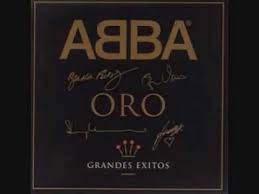
Click here to listen on Youtube.
Most recently, “Dancing Queen” was featured in the film ‘Mamma Mia! Here We Go Again’ released in 2018. The song was performed by a star-studded cast including Pierce Brosnan, Christine Baranski, Colin Firth, Stellan Skarsgård and Amanda Seyfried.
Click here to listen on Youtube.
“Dancing Queen” has spanned multiple generations and is dubbed the best pop song ever!
Tony Bennett, Lady Gaga – I’ve Got You Under My Skin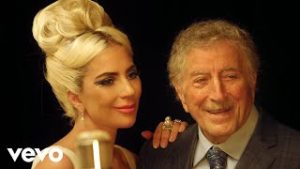
RELEASED: 2021
Click here to listen on Youtube.
“The day we released Cheek To Cheek in 2014, Tony Bennett called me and asked me if I wanted to record another album with him, this time celebrating the songs of Cole Porter. I’m always honored to sing with my friend Tony, so of course I accepted the invitation.” ~ Lady Gaga
“I’ve Got You Under My Skin” was written by Cole Porter in 1936. It was introduced in the musical Born to Dance and performed by Virginia Bruce. It was nominated for the Academy Award for Best Original Song and became a signature song for Frank Sinatra.
Lady Gaga and Tony Bennett recorded the song for their second collaborative album Love for Sale. It is the sixty-first and final studio album of Bennett’s career, and Gaga’s seventh, and follows Cheek to Cheek (2014) their first collaborative album. Tony Bennett broke the Guinness World Record for the oldest person to release an album of new material, at the age of 95. The album was nominated for Album of the Year at the 64th Annual Grammy Awards.
Lady Gaga and Tony Bennett performed at Radio City Music Hall in August of 2021, called One Last Time: An Evening with Tony Bennett and Lady Gaga, before Tony Bennett retired from performing live. The special received four nominations at the 74th Primetime Emmy Awards.
Lady Gaga and Tony Bennett leave behind a beautiful legacy with their final project together.
The Mixer: Radio’s All-Important Studio Booth Engineer
by Karl Schadow
 In previous issues of this Newsletter, this column has profiled various actors, musicians and sound effects artists involved in radio. However, there is one group of individuals who is often overlooked in the histories of various programs and also rarely credited on-air. This person is responsible for the total sound quality that is generated by those groups mentioned-above which is picked up by the studio microphones, beamed by the transmitter, and which finally emanates from the speaker of the listener’s radio. This person, affectionately known as the mixer or control board operator in the studio booth is a highly qualified engineer. The current study will present a few profiles of these individuals as published in contemporary non-technical trade periodicals.
In previous issues of this Newsletter, this column has profiled various actors, musicians and sound effects artists involved in radio. However, there is one group of individuals who is often overlooked in the histories of various programs and also rarely credited on-air. This person is responsible for the total sound quality that is generated by those groups mentioned-above which is picked up by the studio microphones, beamed by the transmitter, and which finally emanates from the speaker of the listener’s radio. This person, affectionately known as the mixer or control board operator in the studio booth is a highly qualified engineer. The current study will present a few profiles of these individuals as published in contemporary non-technical trade periodicals.
One of the earliest features appeared in The International Photographer. It is enlightening that this periodical was chosen for this subject, as it was radio’s goal to instill vibrant pictures in the listener’s minds. The experience of R. W. Murray of station KHJ in Los Angeles was profiled in the September 1934 issue. He made several points concerning the quality of sound as it traveled from the studio to the audience noting: “… due to the low average frequency response of radio sets in homes of the listening public, certain frequencies of the original sound are either lost or over-emphasized.” This required the engineers to produce unnatural sounds that would become “more or less natural again” once they were picked up and amplified by the receiving set. Murray then went on to showcase the manner in which the effects were produced for several programs including Calling All Cars. He stressed that: “All sound effects have to be balanced by the sound effect man and mixer in order to get the proper perspective.” 
In the mid 1940s, Radio Life (published in Hollywood, California) had several interesting features. An article by Evelyn Bigsby (October 18, 1942) entitled “Murdo the ‘Monitor Man’” highlighted the experience of NBC engineer Murdo MacKenzie who was repeatedly requested by top personalities Jack Benny and Bing Crosby for their respective programs. In dealing with the ladder, MacKenzie was empathetic: “I feel a song with Bing . . . I try to see what’s coming before it happens, like coming down on the volume when Bing hits a breath.” MacKenzie also noted the importance of proper selection and then placement of microphones within the confines of the both the cast and orchestra. Occasionally it would be necessary for him to draw a chalk mark on the studio floor to indicate the proper place an opera diva should stand in order not to ruin the performance. There is an artistic skill of the engineer in deciding as to the proper setting of a microphone to convey a sound as a higher, thinner “voice” or the deep, fuller acoustics of “music”. Bigsby viewed MacKenzie as one who works: “… emotionally and as well as mechanically at his job.”

The title of Delle Hunter’s piece “He Can Make a Good Show Bad” (August 6, 1944) does not instill confidence in the reader regarding an engineer’s ability. However, Garry Harris, who was the interviewee for that session, stated he presided over a whopping eleven microphones during Command Performance. Hunter observed him during rehearsal of that show: “… with intricate skill, he works upon the panel, weaving a pleasant pattern of sound in the manner that an artist plays upon a keyboard.” Harris admitted that his most difficult assignment at
CBS was Lights Out and that Dr. Christian one of the easiest. Unfortunately, no secrets concerning these shows were divulged. Harris also told of one adventure of having to stretch a low-level mike line across a street and alley dodging traffic to connect remote broadcast locations.
Another CBS engineer, Robert Anderson informed Shirley Gordon in her treatise on Suspense (January 28, 1945) that the show’s producer/director William Spier: “… allows me to take chances, and he is always aware of an engineer’s problem.” Anderson continued: “Suspense has a meaning of its own for me. I sometimes have the control board set up in a manner that’s never been tried before.” He related that his most challenging effect was creation of the “fog” music in “The Singing Walls” (November 2, 1944) as perceived by the “fogged mind” of a drug user. Anderson always worked closely with soundman Berne Surrey. One particular case of note was the formulation of the public address system in a scene from “The Black Path of Fear” (August 31, 1944).
As you continue to enjoy listening to classic radio programs, keep in mind the achievements of the unsung heroes behind the scenes, especially the engineers. Want to learn more of the role of the mixer in radio, contact this author at khschadow@gmail.com
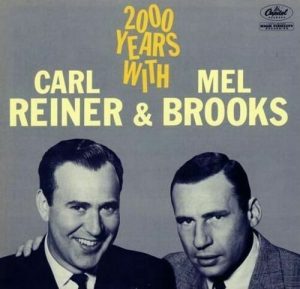 The Timeless Comedy of the 2000 Year Old Man: The 200 Year Old Man
The Timeless Comedy of the 2000 Year Old Man: The 200 Year Old Man
by Barry Richert
Carl Reiner and Mel Brooks can be described as comedy legends whether you’re talking about them separately or together. Individually, it’s hard to know where to start listing their accomplishments. You could mention that Reiner created The Dick Van Dyke Show and wrote and/or directed films like Enter Laughing; Where’s Poppa?; Oh, God!; and The Jerk. Brooks, meanwhile, co-created Get Smart and wrote and/or directed such classic comedy films as The Producers, Blazing Saddles, Young Frankenstein, and Spaceballs. But long before any of those projects came to fruition, Reiner and Brooks teamed up to create one of the most beloved comedy routines of all time: The 2000 Year Old Man.
Carl Reiner and Mel Brooks met while working together on the writing staff of Your Show of Shows—a 1950s television variety series starring comedian Sid Caesar. It was in the writers’ room of that show that the 2000 Year Old Man was born. One day Carl Reiner—seeking to parody the news interview program We the People Speak—pointed at Brooks and said, “Here with us today, ladies and gentlemen, is a man who was actually at the scene of the crucifixion two thousand years ago. Isn’t that true sir?” To which Brooks responded with a world-weary, “Oooh boy.” The writers’ room exploded with laughter. “You knew Jesus?” Reiner continued. “Yeah,” Brooks answered, “Thin lad, wore sandals, long hair, walked around with eleven other guys. Always came into the store, never bought anything. Always asked for water.” As the two continued to riff, the 2000 Year Old Man took shape.
The act proved so popular that the duo started performing it at parties, including one lavish, well-attended Hollywood affair thrown by Broadway producer Joe Fields. In his autobiography, All About Me!, Mel Brooks recalls, “Edward G. Robinson came up to us afterward and said, ‘Make a play out of it. I want to play that thousand-year-old man!’ Then George Burns came over and asked, ‘Is there an album?’ And when we said no, he said, ‘Well, you better put it on an album otherwise I’m gonna steal it.'” 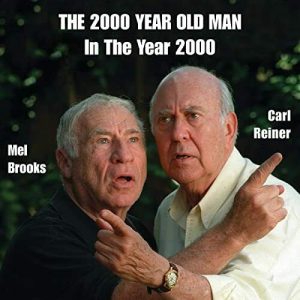
Steve Allen was at the same party and urged Reiner and Brooks to record an album. Despite their reluctance—they felt the routine was for friends and might be too “inside”—Allen arranged free recording time at World Pacific, a studio he co-owned. That recording session became the album 2000 Years with Carl Reiner and Mel Brooks, released in 1961. Besides the 2000 Year Old Man, the record included Reiner interviewing Brooks as a too-hip-for-the-room teen singing sensation, an assortment of eccentric coffee house occupants, and a plantation owner in Argentina with a German accent and a suspiciously exhaustive knowledge of Nazi history. All of them displayed Reiner’s adeptness as a straight man and Brooks’ mastery of comic improvisation. The album was nominated for a Grammy, and Reiner and Brooks were soon making appearances on television, including The Steve Allen Show, The Hollywood Palace, and The Ed Sullivan Show.
A second album, 2000 and One Years with Carl Reiner and Mel Brooks, was released in 1962, and featured a thirteen-minute interview with Brooks’ supercentenarian. The remaining tracks comprised Brooks being interviewed as various oddball characters, including The Third Best Poet and The Tax Expert (author of “Taxes, Taxes, Taxes. What Do They Want From Us?”). One track could be considered the inverse response to the 2000 Year Old Man—The Two Hour Old Baby featured Brooks as a newborn with the power of speech.
In 1963, the third album, Carl Reiner and Mel Brooks at the Cannes Film Festival, was released, recorded live at the infamous French gala. One of the tracks put Brooks’ versatility with accents on full display as he portrayed Adolph Hartner, the German representative from the Narzi Film Company; cockney filmmaker Tippy Skittles; and Italian director Federico Fettucine. Side 2 began with Reiner interviewing the now 2000 and Two Year Old Man, who—among other subjects—holds forth on his definition of comedy: “It’s a point of view. To me, tragedy is if I cut my finger; that’s tragedy! It bleeds and I’ll cry and I’ll run around and I’ll go into Mt. Sinai for a day-and-a-half. I’m very nervous about it! And to me, comedy is if you walk into an open sewer and die—what do I care? That’s comedy!”
It would be ten years before Reiner and Brooks recorded a fourth album, but when they did, it consisted solely of interview material featuring Brooks’ venerable raconteur. In 1973, Warner Brothers Records released 2000 and Thirteen. By now, the duo had perfected the routine and Reiner knew how to draw the funniest material out of Brooks. In the documentary Excavating the 2000 Year Old Man, Brooks remembers, “Carl is a wonderful combination of belief and disbelief. Sometimes he goes along with me when I say the most incomprehensible and ridiculous things…and then I will say something rather simple and he’ll say, ‘I find that hard to believe, sir,’ and he chases me into a corner, and I’m always best, I think, when I’m a little cornered rat.”
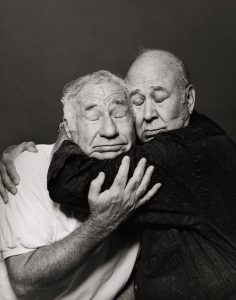 In January of 1975, a half-hour animated TV special called The 2000 Year Old Man aired on CBS. Directed by one-time Disney animator Leo Salkin, the special used material from the previously released albums for its audio track. The special was subsequently released on home video and at this writing is available on YouTube. A companion book featured a transcript of the routines with illustrations from the TV special.
In January of 1975, a half-hour animated TV special called The 2000 Year Old Man aired on CBS. Directed by one-time Disney animator Leo Salkin, the special used material from the previously released albums for its audio track. The special was subsequently released on home video and at this writing is available on YouTube. A companion book featured a transcript of the routines with illustrations from the TV special.
The fifth and final album, The 2000 Year Old Man in the Year 2000, came out in 1997 and was released in tandem with a book featuring the same title. It had been 24 years since the release of 2000 and Thirteen. Reiner and Brooks’ voices were a bit timeworn, the banter slightly less hurried. But the humor was sharper than ever, whether Brooks was waxing nostalgic about a favorite childhood book (“See Moses Run”) or describing a hat shop he once owned (Yarmulkes Galore!). The album sold well and won a Grammy for Best Spoken Comedy Album, proving the timelessness of Reiner and Brooks’ creation.
In All About Me!, Brooks revealed the appeal of playing the ancient storyteller for so many years: “Part of my motive for doing the 2000 Year Old Man was to preserve the Yiddish dialect and the sounds that I grew up with. I was doing my grandparents. My father’s father and mother, and my mother’s father, and their friends . . . He’s the Eastern European immigrant Jew, pronouncing himself forcefully, struggling to make it in America. He’s got to know all the answers, because it’s about survival.”
In his 2003 memoir, My Anecdotal Life, Carl Reiner pointed out, “Growing up in Brooklyn and listening to his uncles, his neighbors, and the shopkeepers talk and argue, Mel, blessed with a good ear for music, had no difficulty absorbing the lilting, Middle European Yiddish accent. . . Our audiences were always . . . happy to hear the Old Man tell intimate stories of his involvements with Joan of Arc, Helen of Troy, and Murray, the discoverer of ladies.” With Reiner’s death in 2020, we likely won’t hear any more recollections from the 2000 Year Old Man. But the five albums recorded by Reiner and Brooks ensure that we’ll be laughing at his past anecdotes for . . . well, another 2000 years.
JOHN ZACHERLE AND “BEYOND THE END”
 by Martin Grams
by Martin Grams
Anyone who grew up in New York City during the late fifties would recall John Zacherle as the ghoulish host of late-night horror movies, providing dark humor between the commercial breaks much in the same manner as Raymond on radio’s Inner Sanctum Mystery. As part of the Shock Theatre package, those movies included the likes of Boris Karloff, Bela Lugosi, Lon Chaney, Jr. and Peter Lorre. So it may come as no surprise that on the evenings of February 25, March 4 and March 11, 1959, Zacherle tried his hand as a ghoulish host on late-night radio with a short-lived series titled Beyond the End.
Advertised as “a three-program mystery series with a comic twist,” through an NBC press release, the program aired from 10:06 to 10:28 p.m. Certain newspapers listed the program on radio logs as “World’s Literature,” with no reference to the horror host or what specific dramatic readings were scheduled. The horror dramas consisted of Nelson Olmsted’s dramatic readings from commercial LP records released in 1956. Among the spooky dramas presented were Edgar Allan Poe’s “The Tell-Tale Heart” and “The Black Cat.” As for Zacherle, his gig as a radio horror host was short-lived.
Zacherle was a celebrity guest at the Friends of Old-Time Radio convention many years ago but sadly, no one was apparently aware of the radio program and asking Zacherle myself about the program he could only remember going to the radio station to do his spiel before the microphone. Nothing memorable to recall.
Since the programs aired over NBC radio live, the closest we can come to hearing any rendition of his spook-tacular radio performance are his LP records issued from 1960 to 1963, Spook Along with Zacherly, Monster Mash, Scary Tales Featuring John Zacherly and Zacherle’s Monster Gallery. It seems unlikely whether we will be able to verify whether or not his 1958 top-ten novelty rock and roll song, “Dinner With Drac,” was featured on any of the three broadcasts, quite possibly as the program’s theme song?
Special Thanks to Steven Thompson, Michael Biel and David Lennick for their assistance.
THE 50TH ANNIVERSARY OF TV’s M*A*S*H PART 1
“War is hell. So is TV. M*A*S*H and the medium were made for each other.”
by Larry Gelbart
Fifty years ago, television was growing up. In 1972, wacky comedies about suburban witches, voluptuous genies, and flying nuns had given way to thought-provoking shows that tackled envelope-pushing issues like sexism, civil rights, and bigotry. Into this evolving television landscape arrived M*A*S*H, a subversive military comedy that followed the staff of the 4077 Mobile Army Surgical Hospital during the Korean War. Based on the smash 1970 Robert Altman film of the same name (which was based on the novel by Dr. Richard Hornberger), M*A*S*H premiered on CBS fifty years ago in the fall of 1972 and ran until 1983, successfully combining comedy and drama in a way that was unique to television.
 The person responsible for adapting the film into a TV series was writer/producer Larry Gelbart, who had written for the classic radio comedy Duffy’s Tavern, as well as comedians Danny Thomas, Jack Paar, Joan Davis, Bob Hope, and Sid Caesar. He’d also written the screenplays for Notorious Landlady and The Wrong Box and won a Tony for co-authoring the Broadway musical A Funny Thing Happened on the Way to the Forum.
The person responsible for adapting the film into a TV series was writer/producer Larry Gelbart, who had written for the classic radio comedy Duffy’s Tavern, as well as comedians Danny Thomas, Jack Paar, Joan Davis, Bob Hope, and Sid Caesar. He’d also written the screenplays for Notorious Landlady and The Wrong Box and won a Tony for co-authoring the Broadway musical A Funny Thing Happened on the Way to the Forum.
In 1971, Gelbart was in London producing a comedy series starring British comedian Marty Feldman when he was contacted by producer/director Gene Reynolds, whose television credits included The Ghost and Mrs. Muir and Room 222. Reynolds asked Gelbart if he would be interested in writing the pilot for a TV version of M*A*S*H. Gelbart said he would write the script on one condition: that the series maintain the satirical anti-establishment tone of the film and not be yet another madcap television service comedy. Reynolds agreed. When he received Gelbart’s script a couple months later, he liked it. CBS did, too, and agreed to finance the pilot.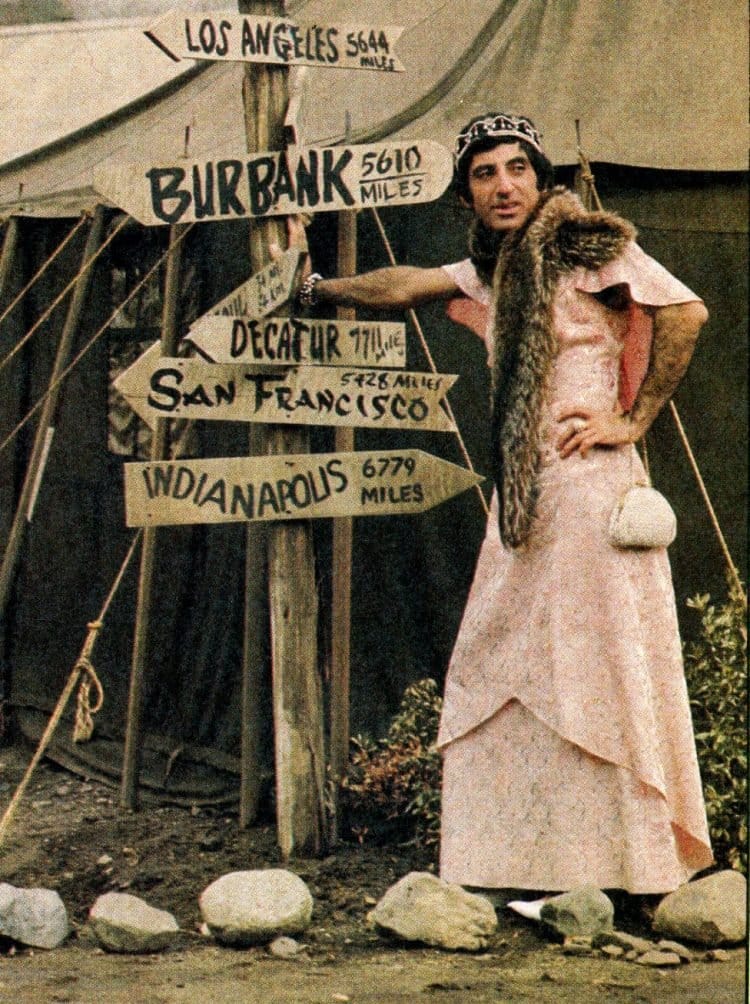
Like the personnel in a real-life MASH unit, the TV program M*A*S*H saw people come and go over the years. But the ensemble put together for the pilot by casting director Burt Metcalfe (who would soon become a producer on the show) was a who’s who of proven talent that included McLean Stevenson as Colonel Henry Blake, Wayne Rogers as Captain “Trapper John” McIntyre, Gary Burghoff (the only main cast member to reprise his character from the movie) as Corporal Walter “Radar” O’Reilly, Loretta Swit as Major Margaret “Hot Lips” Houlihan, Larry Linville as Major Frank Burns, and Alan Alda as the conscience of the series, the quick-witted anti-authoritarian Captain Benjamin Franklin “Hawkeye” Pierce.
William Christopher was cast as Father Francis Mulcahy beginning with the second episode, while Corporal Max Klinger—whose penchant for women’s clothing was driven by his desire to be discharged on a Section 8 (mentally unfit for military service)—didn’t appear until the fourth episode. What was supposed to be a single appearance by actor Jamie Farr turned into several, and by Season 4, Klinger was made a regular character.
On the strength of the pilot, CBS decided to greenlight M*A*S*H as a series. In September of 1972, the pilot aired as the first episode in the 7:30 PM (6:30 Central) Sunday night time slot, opposite The FBI and The Wonderful World of Disney. Filmed using the outdoor sets from the movie, which were still standing, it had cost about $250,000 to produce. Gelbart’s flair for witty dialogue was apparent from the very beginning, whether it was through Hawkeye’s Groucho-like anecdotes (“I loved a girl in San Francisco once. No, twice.”), or Margaret’s frustrated observations about Hawkeye and Trapper (“Those two…they’re ruining this war for all of us!”).
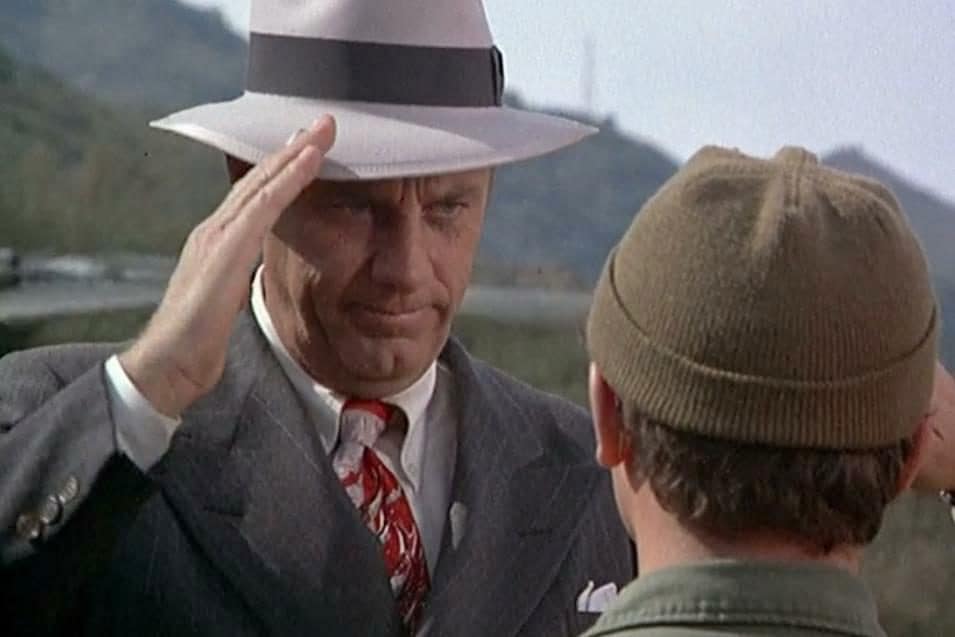 Not everyone was laughing, however. Time magazine declared M*A*S*H one of the biggest disappointments of the TV season. Undaunted by the critics, the cast and crew soldiered on. Gelbart believed the show found its voice with an episode called “Sometimes You Hear the Bullet,” in which Hawkeye operates on an old friend who has been wounded in combat. When his pal dies on the operating table, Hawkeye’s sense of loss is palpable. “It was the first indication,” Gelbart noted in his memoir, Laughing Matters, “that a mixture of laughter and tragedy might be possible, without any heavy-handed manipulation of the audience’s emotions.”
Not everyone was laughing, however. Time magazine declared M*A*S*H one of the biggest disappointments of the TV season. Undaunted by the critics, the cast and crew soldiered on. Gelbart believed the show found its voice with an episode called “Sometimes You Hear the Bullet,” in which Hawkeye operates on an old friend who has been wounded in combat. When his pal dies on the operating table, Hawkeye’s sense of loss is palpable. “It was the first indication,” Gelbart noted in his memoir, Laughing Matters, “that a mixture of laughter and tragedy might be possible, without any heavy-handed manipulation of the audience’s emotions.”
Despite hitting its stride creatively, M*A*S*H finished the first season tied for 46th in the ratings, just behind The Brady Bunch. But before the second season, two things happened that gave M*A*S*H the boost it needed to succeed: 1) Twentieth Century Fox re-released Robert Altman’s film to help stir up interest in the TV show, and 2) CBS moved the series to a prime slot in the prized Saturday night lineup, nestled comfortably between All in the Family and The Mary Tyler Moore Show. The show flourished in Season 2, becoming the fourth most-watched program on television.
To ensure the series’ authenticity, Larry Gelbart and Gene Reynolds went to Korea between Seasons 2 and 3. “If, indeed, the stories got better in Year Three, it’s because of this trip,” Gelbart asserted in The Complete Book of M*A*S*H. “We went to the 8055, which, of course, was no longer mobile and, as you know, was the real hospital where Dr. Richard Hornberger was stationed. We talked to everybody and came back with twenty-two hours of taped conversations—nurses, doctors, chopper pilots. It was…hard to separate fact from what we were doing on screen, and it’s that marriage that I think is what really made the difference in Years Three and Four.”
Despite a move to Tuesdays in Season 3, the popularity of M*A*S*H persisted. As the show progressed under the watchful eye of Larry Gelbart and producer Gene Reynolds, specific episodes became fan favorites: “Deal Me Out” shows the camp’s weekly poker game being interrupted by various emergencies and introduces us to neurotic CIA operative Colonel Flagg (“Don’t play dumb! You’re not as good at it as I am!”). “Springtime” shows Radar falling in love and a wedding dress-clad Klinger marrying his girl back home by short wave radio, while an overly grateful patient (a hulking Alex Karras) declares himself Hawkeye’s personal protector.
In the popular “Adam’s Ribs,” Hawkeye, sick of eating “a river of liver and an ocean of fish,” places a long-distance call to Chicago for a takeout order of ribs; but getting the savory package through military red tape to the 4077 becomes an unexpected ordeal. The Season 3 finale, “Abyssinia, Henry,” was a turning point in the series. Henry Blake gets enough discharge points to go home, and Frank Burns gleefully prepares to take command of the 4077. Several days after Blake’s departure, Radar enters the bustling operating room with a message that stuns the room into silence: “Colonel Henry Blake’s plane was shot down over the Sea of Japan. It spun in. There were no survivors.”
The death of Henry Blake drew the ire of many fans, but there was no denying its dramatic impact. It had been McLean Stevenson’s decision to leave the series, which, in turn, had presented Gelbart with the opportunity to show that even nice guys get killed in war. As fate would have it, Wayne Rogers decided to leave after the third season, as well. That meant the fourth season would involve the replacement of two characters.
The hour-long Season 4 premiere, “Welcome to Korea,” introduced us to Captain B.J. Hunnicutt. It’s apparent from our first glimpse of him that B.J. is not cut from the same cloth as Trapper. In The Complete Book of M*A*S*H, actor Mike Farrell maintained that was how he wanted it: “I had no wish to do Trapper at all. Wayne had done it and done it well and was well accepted by the public in that role.” Farrell had been assured that B.J. would be nothing like Trapper and would serve as a contrast to “Hawkeye the womanizer.”
The second episode of Season 4, “Change of Command,” introduced us to the new commanding officer of the 4077, Colonel Sherman T. Potter played by TV veteran Harry Morgan. Hawkeye and B.J. are worried that the Regular Army Potter is going to make life miserable for them. But after a particularly grueling 24-hour stretch of surgery, Potter proves himself capable of both compassion and sincerity—even taking a moment to compliment Klinger on his handbag.
In addition to “Welcome to Korea” and “Change of Command,” Season 4 had its share of standout episodes, including “Quo Vadis, Captain Chandler?” about a wounded soldier who claims to be Jesus Christ; “The Bus,” in which Radar gets lost driving Hawkeye, B.J., Frank, and Colonel Potter back from a medical conference; and “The Interview,” a documentary filmed in black and white about the 4077 that included candid interviews with the staff.
Season 4 proved that M*A*S*H could survive changes in personnel while maintaining its trademark humor and poignancy. But Season 5 would bring the biggest change yet: Larry Gelbart would no longer be with the show.
Next Issue – In Part 2, we learn about more cast changes, examine how the show evolved without Larry Gelbart at the helm, and take a look at the most-watched series finale in the history of television.
Hollywood 360 Schedule
10/1/22
Suspense 1/11/45 The Drive In
Inner Sanctum Mystery 4/10/45 The Bog Oak Necklace
The Molle’ Mystery Theater 5/31/46 Witness for the Prosecution
Somebody Knows 8/24/50 Elizabeth Short Murder – The Black Dahlia
Nick Carter, Master Detective 5/8/48 The Case of the Tattooed Cobra
10/8/22
The Whistler 1/28/48 Night Final
Archie Andrews 10/30/48 Halloween Party
The Mercury Summer Theater 6/21/46 The Hitchhiker
Mystery In the Air 8/14/47 The Lodger
The Weird Circle 10/10/43 What Was It?
10/15/22
Suspense 5/31/45 August Heat
Inner Sanctum 4/17/45 The Judas Clock
Lights Out! 12/15/42 Knock At the Door
The Black Museum 1950s The Canvas Bag
Murder At Midnight 8/8/47 The Line is Dead
10/22/22
The Sealed Book 7/8/45 Till Death Do Us Part
The Molle’ Mystery Theater 5/24/46 Goodbye, Darling
The Mysterious Traveler 4/4/50 The Man From Singapore
The Whistler 4/21/47 Backlash
The Hall of Fantasy 6/1/53 The Tell-Tale Heart
10/29/22
Mystery House 1944 The Thirsty Death
Suspense 11/1/45 The Dunwich Horror
Lights Out! 10/20/42 Poltergeist
Inner Sanctum 5/7/46 You Could Die Laughing
Murder By Experts 7/11/49 Prescription for Murder
© 2022 Hollywood 360 Newsletter. The articles in the Hollywood 360 Newsletter are copyrighted and held by their respective authors.

